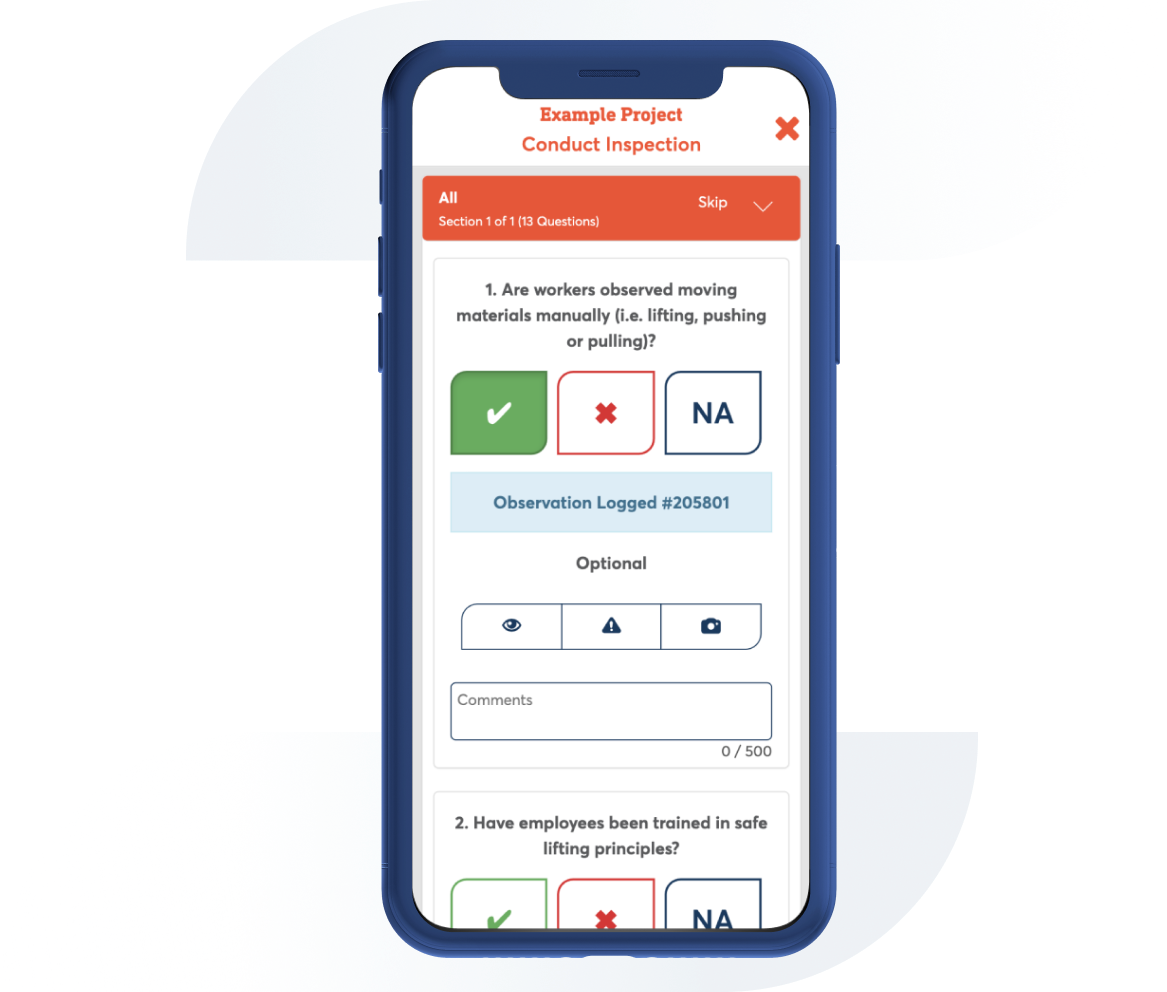OSHA Respiratory Protection Inspection and Safety Checklist
Contributor: Safesite Jurisdiction: OSHA
This inspection covers the general OSHA requirements for a Respiratory Protection Program, as well as a checklist for pre-inspecting equipment and determining any potential hazards before use.

Template Preview
1. If employees are using respirators, is a written respiratory protection program in place?
Actions
2. Has someone been assigned as the Respiratory Protection Program Administrator?
Actions
3. Has the Respiratory Protection Program been evaluated in the last year?
Actions
4. Have procedures been established for cleaning, storage, disinfecting and inspecting respirators?
Actions
5. Have procedures been established for proper selection of respirators?
Actions
6. Have employees who wear respirators been medically evaluated prior to using respiratory equipment?
Actions
7. Have employees who wear respirators received respiratory protection training prior to using respiratory equipment?
Actions
8. Have employees who wear respirators been fit tested for the respirators they will use?
Actions
9. Are respirators cleaned, sanitized and inspected?
Actions
10. If respirators are maintenanced onsite, is it done by persons trained in proper respirator maintenance and assembly?
Actions
11. Are respirators stored in a manner that will protect them from damage?
Actions
1. Can the inhalation hazard be removed or controlled by enclosure, increased ventilation, or substituting for a less toxic material?
Actions
2. Was the hazard evaluated for the appropriate respiratory protection?
Actions
3. What is the respiratory hazard employees are being protected from?
4. What respiratory protection are employees are wearing? Example: Full face Powered Air Purifying Respirator (PAPR) with P100 filters; Supplied air; Half half air purifying respirator (APR) with organic vapor filters.
5. What is the filter change out schedule? (Ex: end of shift, every 4 hours, NA-SCBA or airline respirator.)
6. Are the respirators NIOSH approved?
Actions
7. Did employees inspect the respirator for damage prior to donning?
Actions
9. Is anything preventing a good seal between the respirator and the employees face, like facial hair, glasses, etc.
Actions
10. Have employees receive medical evaluation, fit tests and training?
Actions
11. Are respirators stored in a manner that will protect them from damage?
Actions
12. Are respirators cleaned regularly?
Actions
13. Change out schedule: When are filters changed out? End of shift? Every 4 hours?
14. Write Comments or Remarks here:

Can't find what you are looking for?
